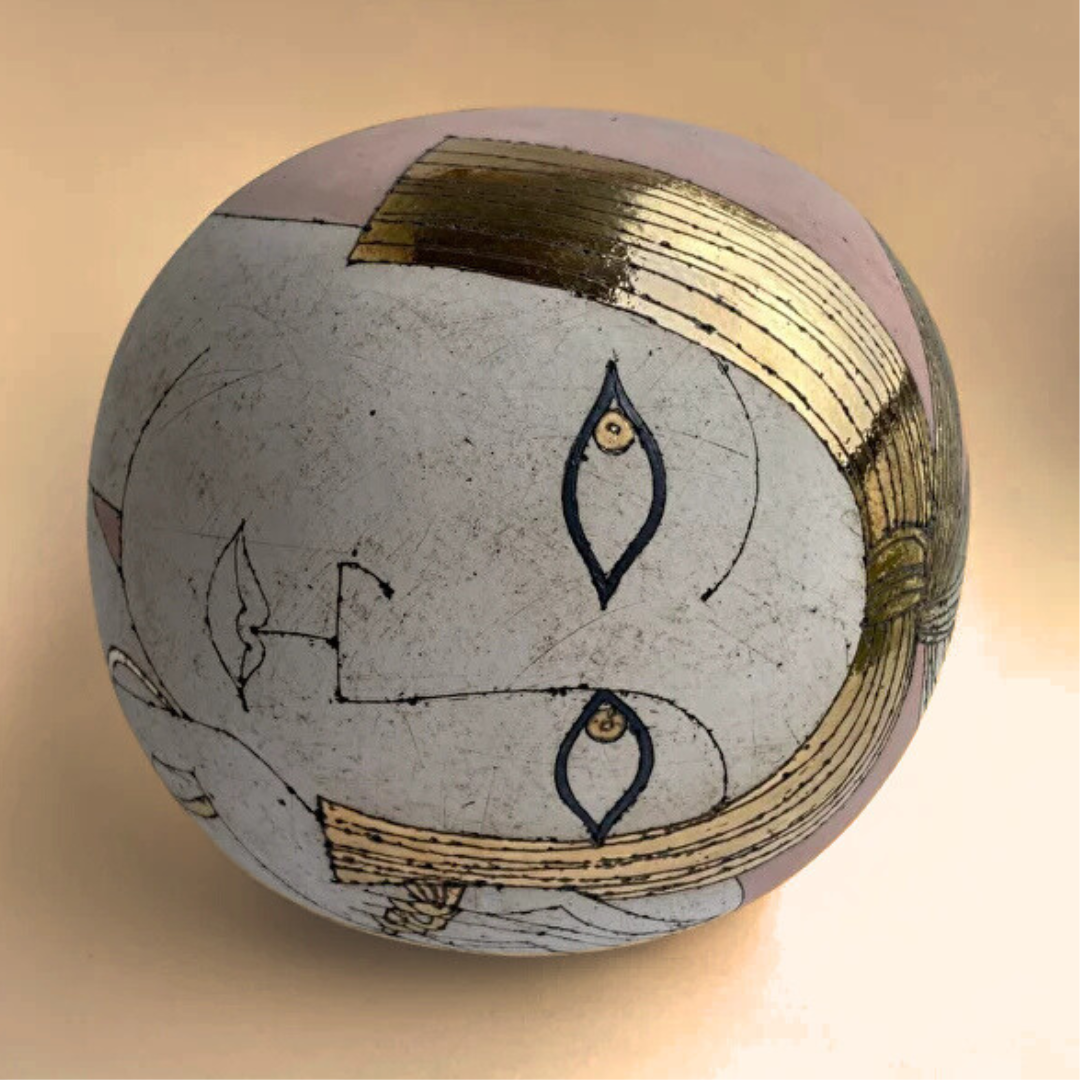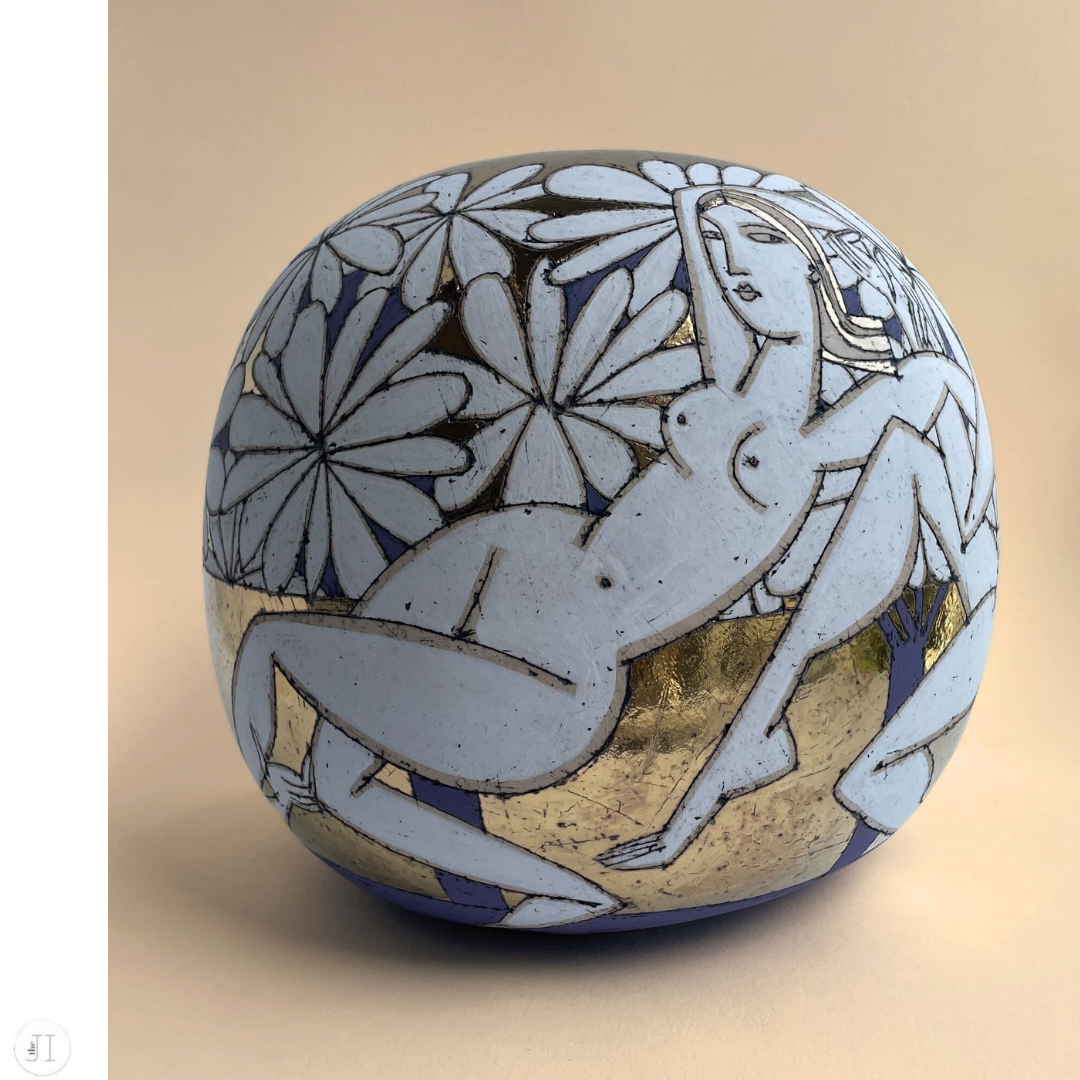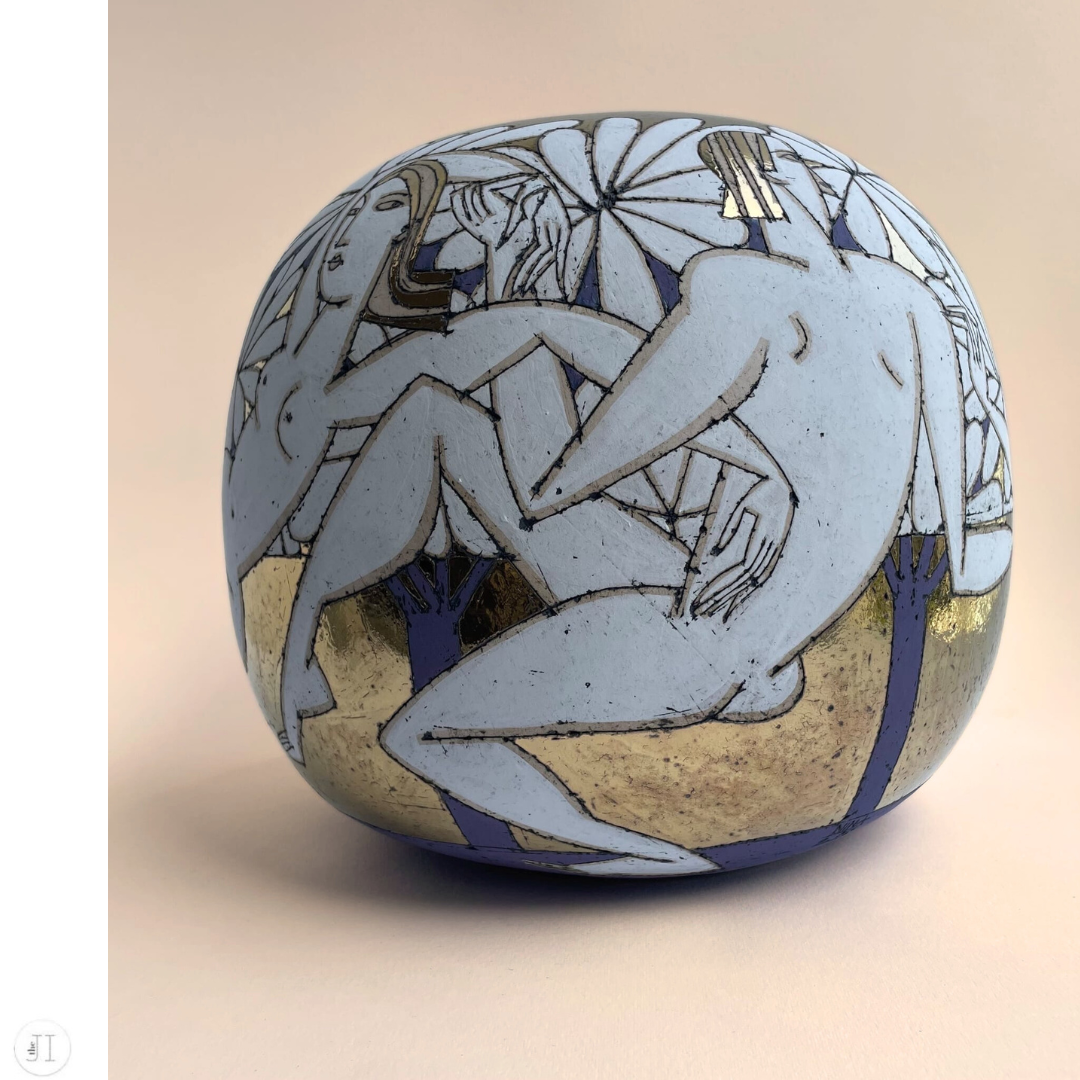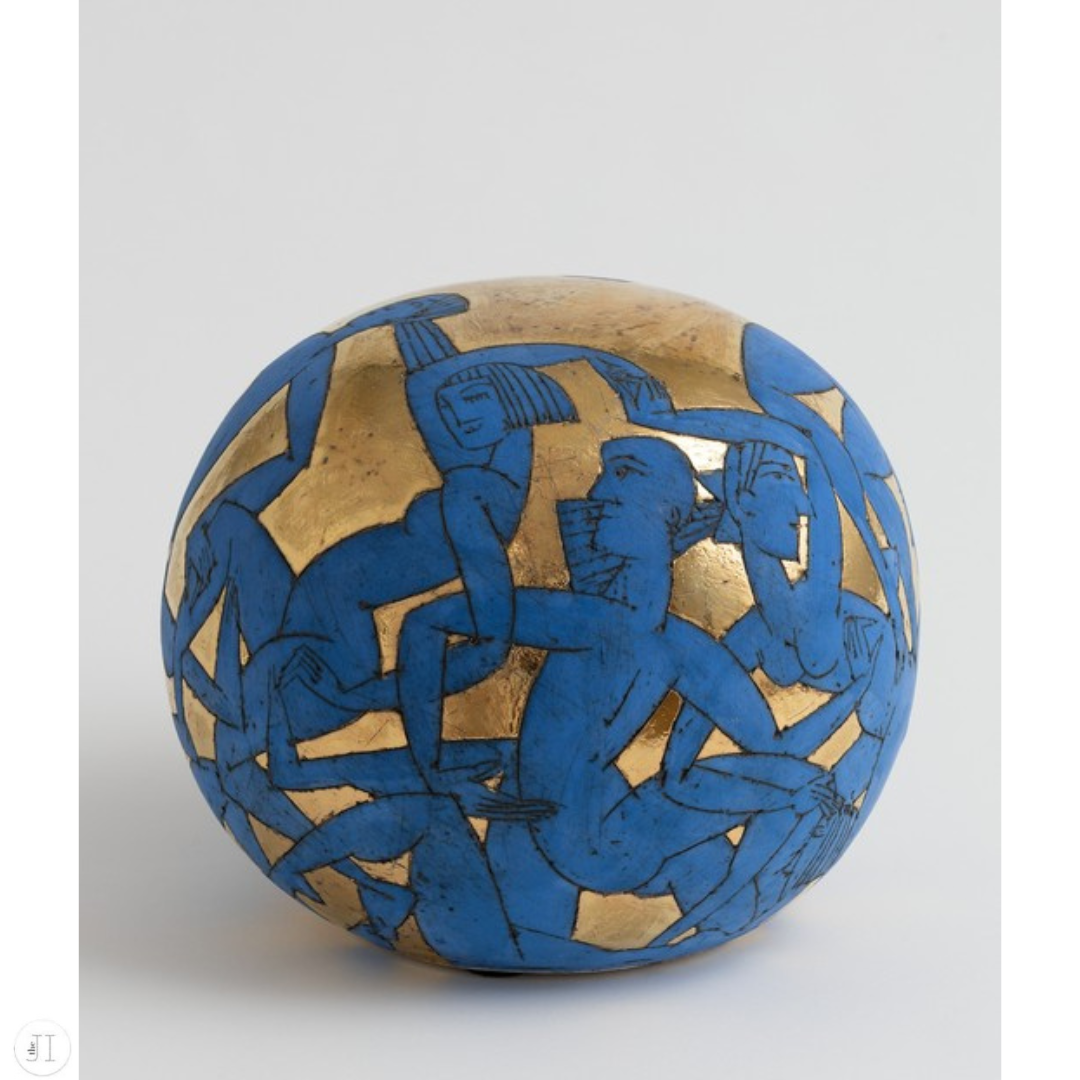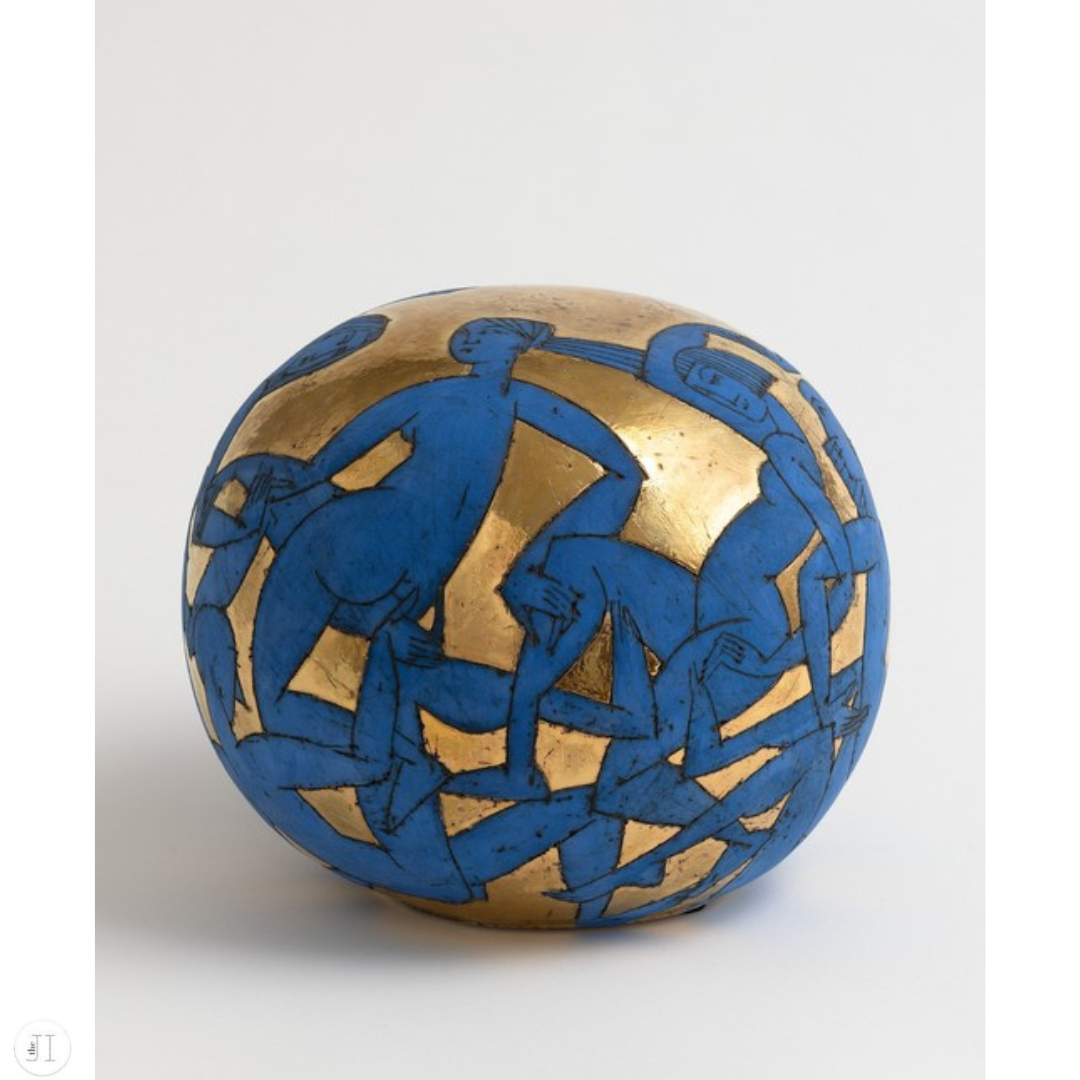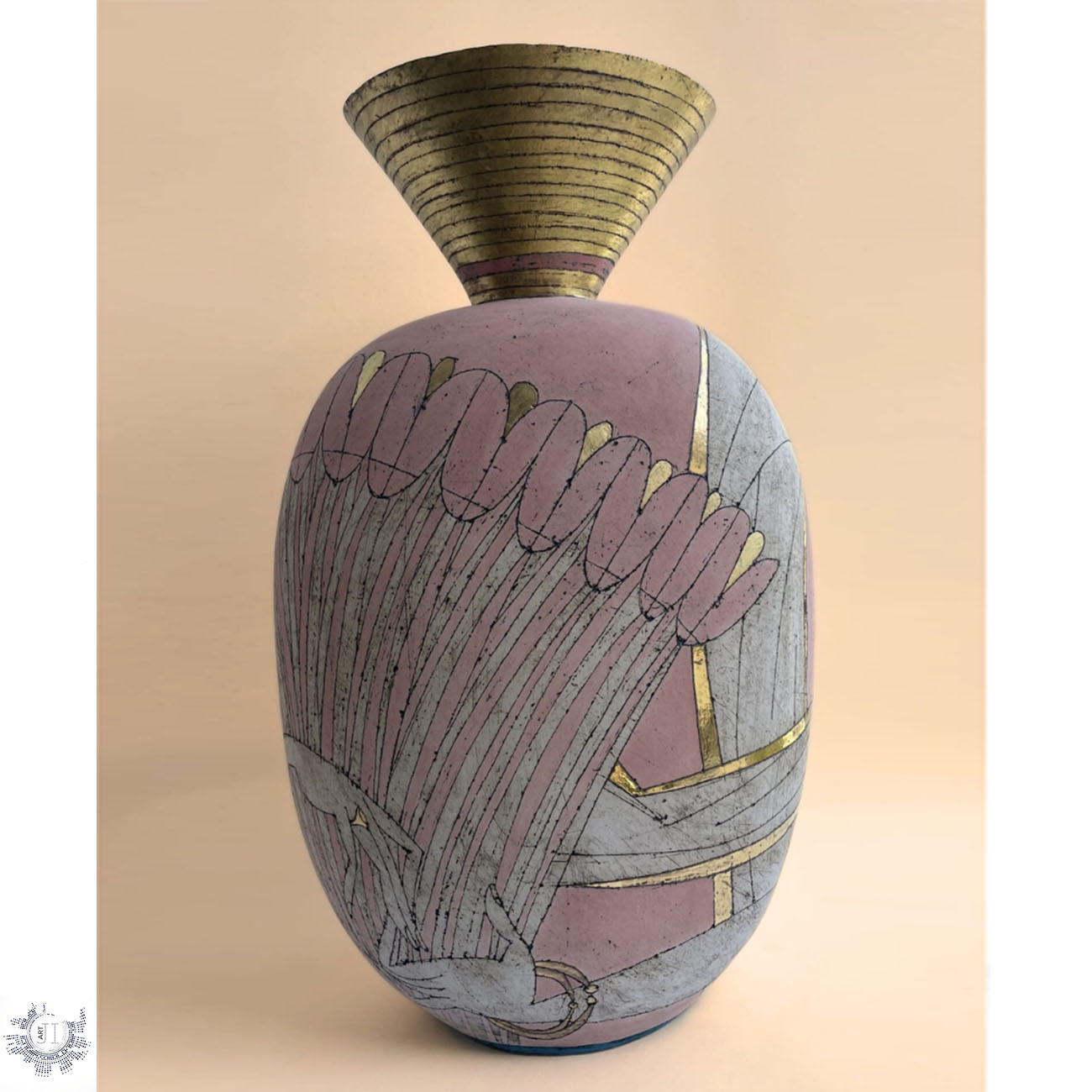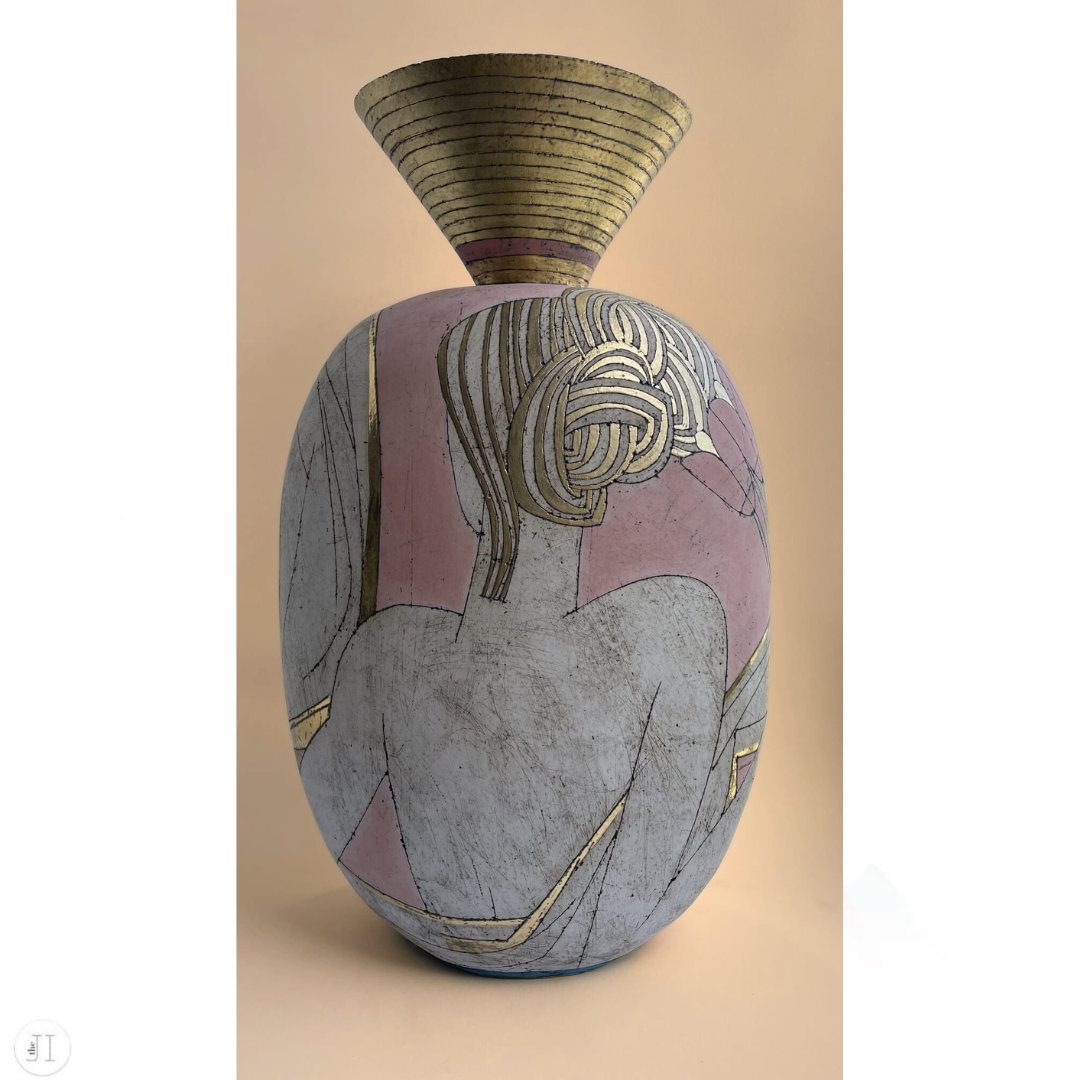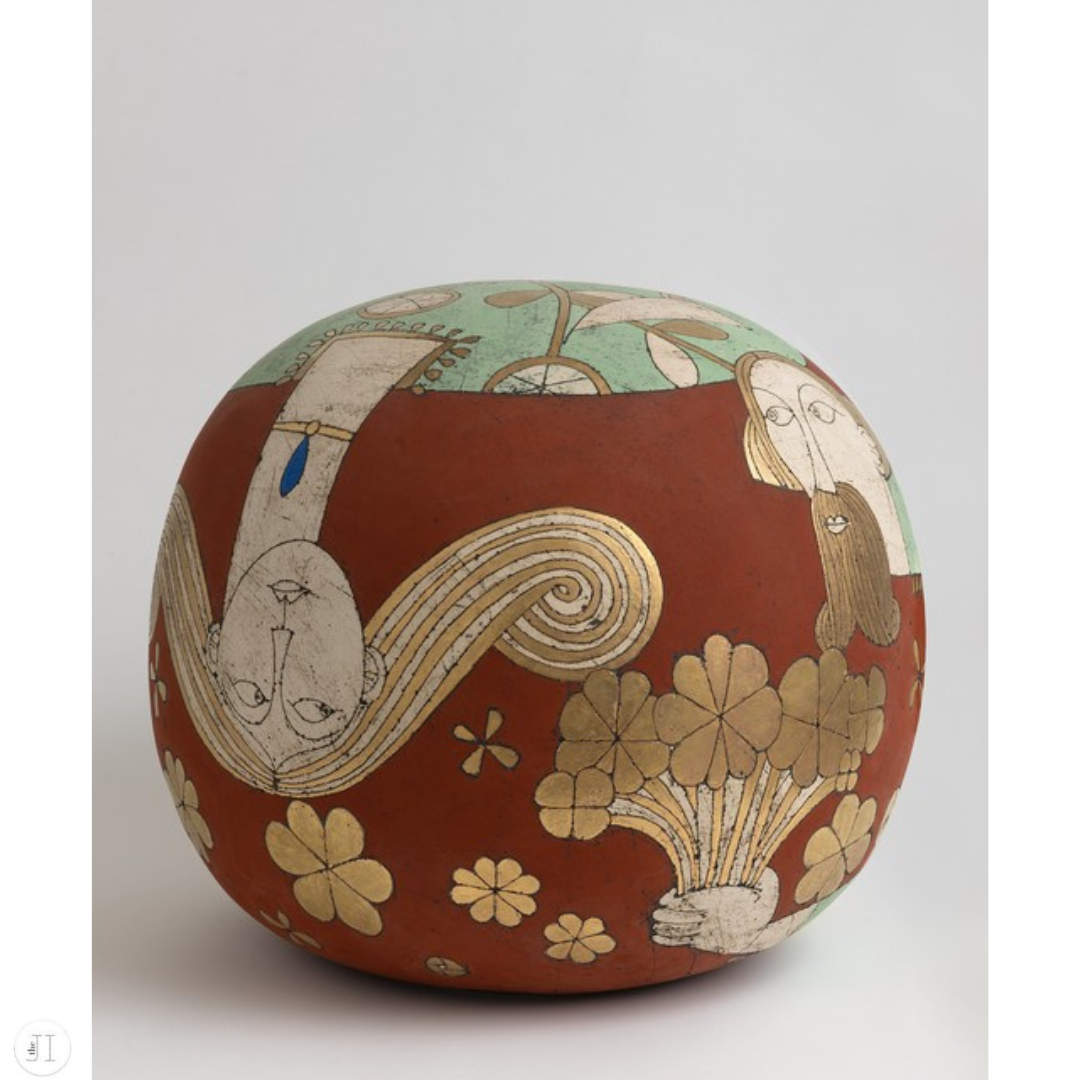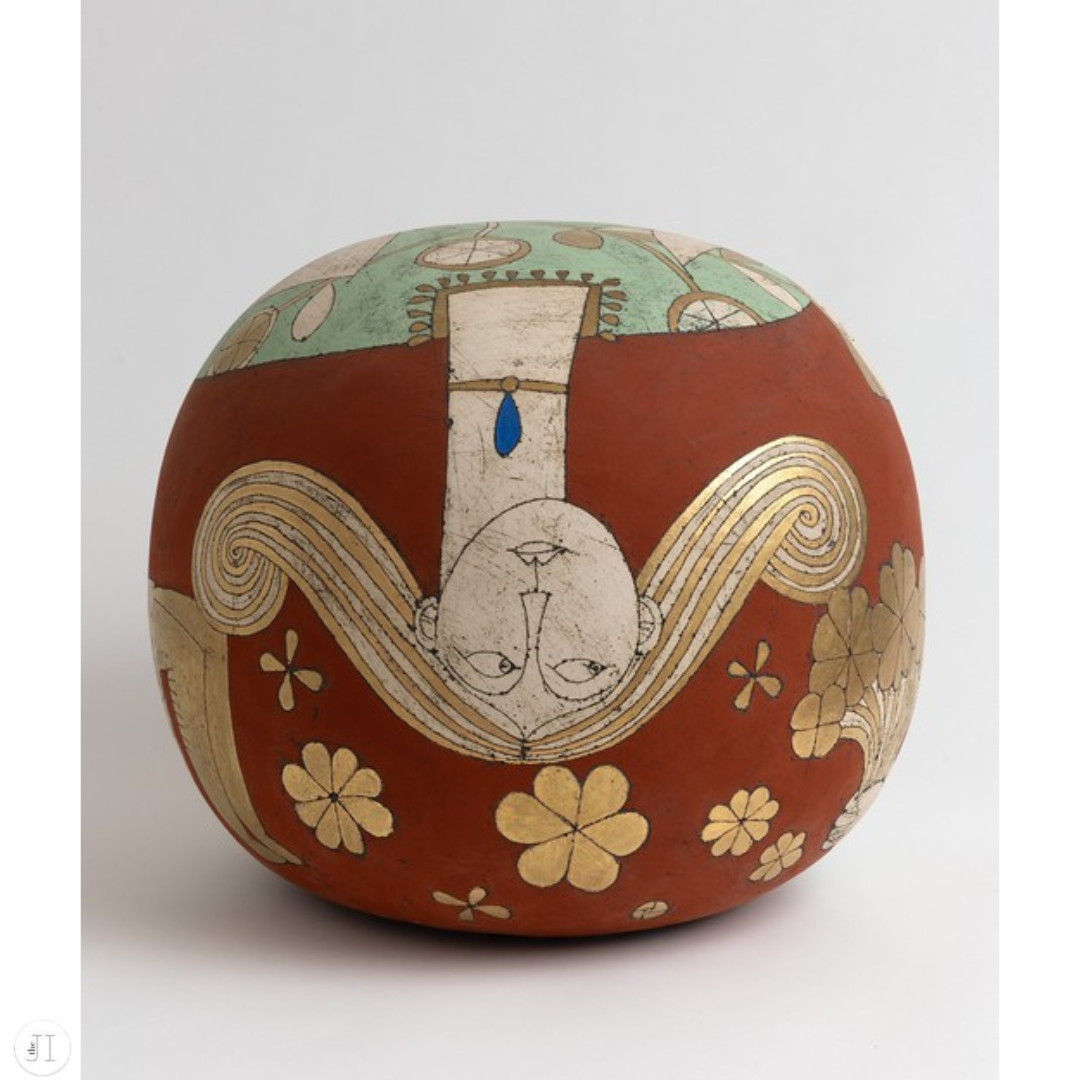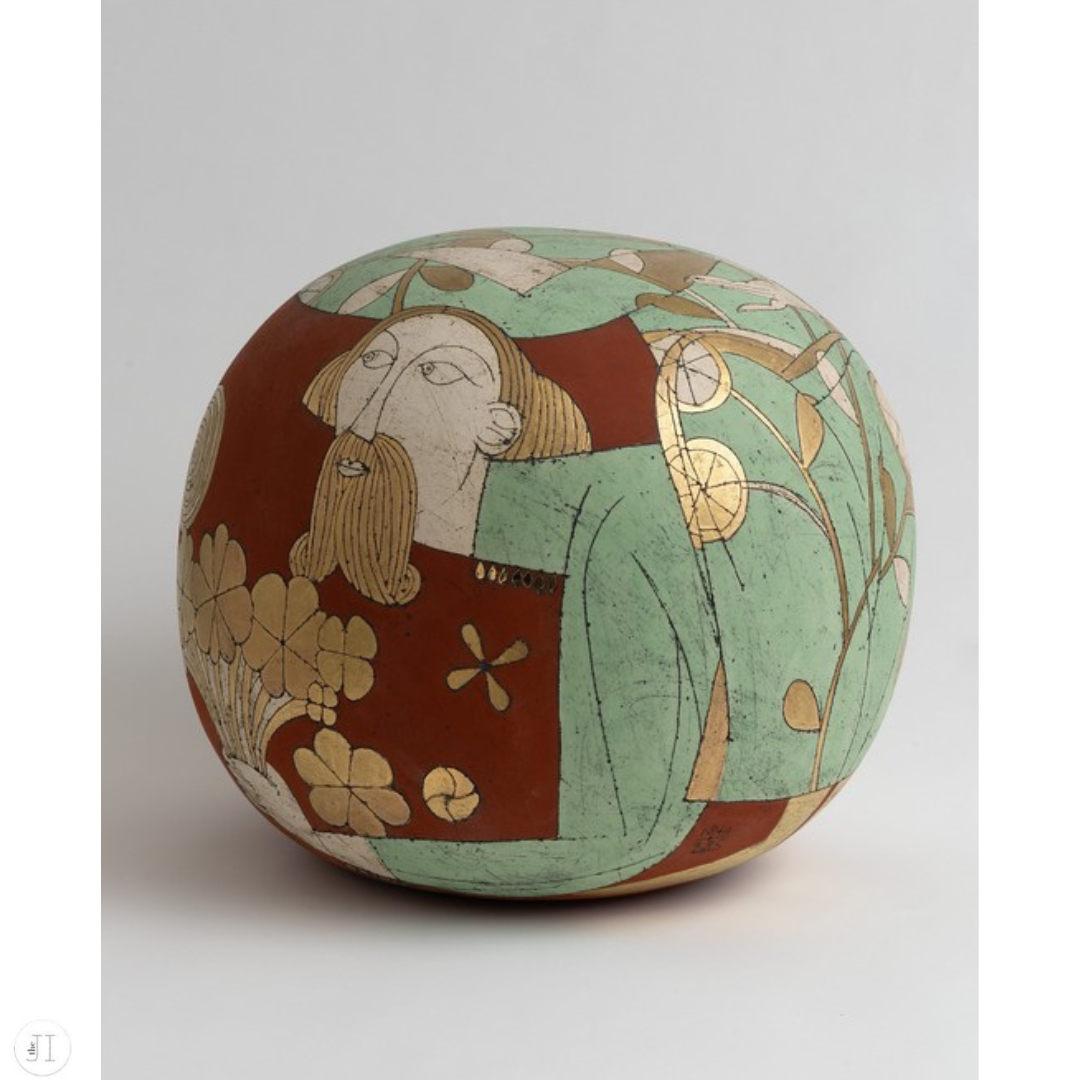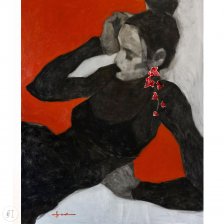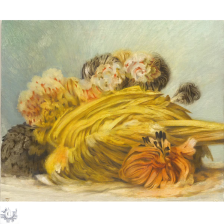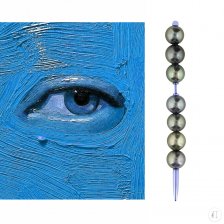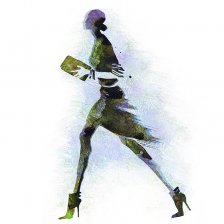NINA KHEMCHYAN: UN JOUR AU PARADIS—A JOURNEY INTO THE SACRED
Much of my work is connected to states of the soul. I trust my intuition and follow it—I’m curious to see where it will take me.
Nina Khemchyan
There are moments when the world pauses. When touch, memory, and spirit align in a single, quiet gesture.
Nina Khemchyan, an artist whose hands have spent decades shaping the very clay of the earth, invites us into such a moment. Her latest work, UN JOUR AU PARADIS—“A Day in Paradise”—is a journey into the intimate: the earth beneath us, the material that holds our memories, and the sacredness of the process of creation itself.
Born in Armenia, Nina's artistic path was paved with both tradition and reinvention. Her early education at the Yerevan State Institute of Theatre and Fine Arts ignited a spark that would travel with her, from the streets of Yerevan to the studios of Paris, where she studied at the École Nationale Supérieure des Arts Appliqués et des Métiers.
Her hands have molded thousands of spheres, each one a closed universe: quiet, introspective sanctuaries formed from chamotte clay, each one carrying the mark of her process, a silent dialogue with the earth that she describes as sacred: "Before any creation, I need to touch the earth, to feel its moisture beneath my fingers, to breathe in its scent." The simple act of touch—of communion with the soil—becomes a part of the sculpture itself, a silent echo of life’s most sacred rhythms.
In UN JOUR AU PARADIS, these spheres come alive with symbolic engravings: eyes closed in contemplation, stylized limbs, hands intertwined. These marks are symbols of connection, of gestures made across time and space: a hand reaches out, or perhaps, folds into itself; an eye closes, perhaps in prayer, perhaps in sleep.
But Nina's paradise is not distant. It is not a place to escape to. It is here, grounded in the earth, oxides, gold, and colorful pigments. As the artist shapes each piece, the fire that hardens the clay becomes a metaphor for memory—the permanence of what we create in the act of simply existing. This is her gift to us: a space where we might, for a moment, feel the silence between us and the world, where we might touch the earth as she does, and in doing so, feel connected to something larger.
By moving from one sphere to another, I feel like I continue the story I once began: stringing them together like a pearl necklace on an invisible thread.
Nina Khemchyan
The JI: In both “Echo” and “Un jour au paradis,” you return to the form of the sphere—quiet, self-contained, timeless. What draws you to this form again and again? Do you see the sphere as a kind of container—for memory, for sound, for the sacred?
Nina: The sphere, my beloved sphere… For me, this form symbolizes constant motion, infinity, and harmony. The drawing that wraps around it becomes endless—there is no beginning and no end.
There is something incredibly magnetic in this form; each sphere is unique in its narrative and its color. And by moving from one sphere to another, I feel like I continue the story I once began: stringing them together like a pearl necklace on an invisible thread.
The JI: Your work often carries echoes of ancient Armenian chant, sacred script, and ancestral touch. When someone stands before your ceramics, are you asking them to see, or to listen? Or perhaps, to remember?
Nina: If we’re talking about Paradise, we cannot avoid mentioning Terrestrial Paradise—which, according to tradition, lies at the foot of Mount Ararat. So, whether we want to or not, we must remember Armenia.
Of course, I never ask the viewer to see something specific in my work—I don’t see the point in that. But naturally, it’s a pleasure when my work is understood and appreciated.
I don’t want to set boundaries between past, present, and future. Everything is unified—and that’s beautiful.
Nina Khemchyan
The JI: There is something deeply non-linear in your approach to time. The works feel ancient and yet entirely of the present—dreamlike, as if suspended. Are you intentionally dissolving the boundaries between past, present, and future in your practice? What kind of temporality do you hope to evoke?
Nina: Time is elusive. I really want to understand it, but I don’t manage to. I don’t want to set boundaries between past, present, and future. Everything is unified—and that’s beautiful.
I’ve never had the desire to follow trends or to address themes that emphasize a specific period of time.
Much of my work is connected to states of the soul. I trust my intuition and follow it—I’m curious to see where it will take me.
The pink of sunrises and sunsets, the pink of love and tenderness, the pink of paradise flowers…
Nina Khemchyan
The JI: In Venice, your work confronted the viewer with the Seven Deadly Sins—shadow, tension, confession. In Paris, we step into something lighter, more celestial. Are these exhibitions two sides of a spiritual journey? Are we moving from penitence to paradise—or are they meant to coexist in the same breath?
Nina: I believe all of it coexists side by side—one state flows into another. It’s inevitable and it’s an endless process.
Much of my work is connected to states of the soul. I trust my intuition and follow it—
I’m curious to see where it will take me.
Last year was full of intense impressions. Thanks to my participation in the Venice Biennale, I had to travel to beautiful Venice several times—and I truly fell in love with it. The pink sunsets on the Zattere promenade left an indelible mark on my soul. The sky in Venice is extraordinary.
When I returned to Paris and resumed work, the color pink unexpectedly appeared in my palette. The pink of sunrises and sunsets, the pink of love and tenderness, the pink of paradise flowers…
What: A meditative journey through chamotte clay spheres—intimate, tactile worlds inscribed with memory, myth, and quiet intensity.
Why: To explore beauty, transmission, and the sacred through form and matter. Not a paradise to escape to, but one to rediscover—earthbound, raw, and within reach.
Where: Galerie de Buci, 73 rue de Seine, 75006 Paris
When: June 5 – July 26, 2025 | Tuesday to Saturday, 11h–19
